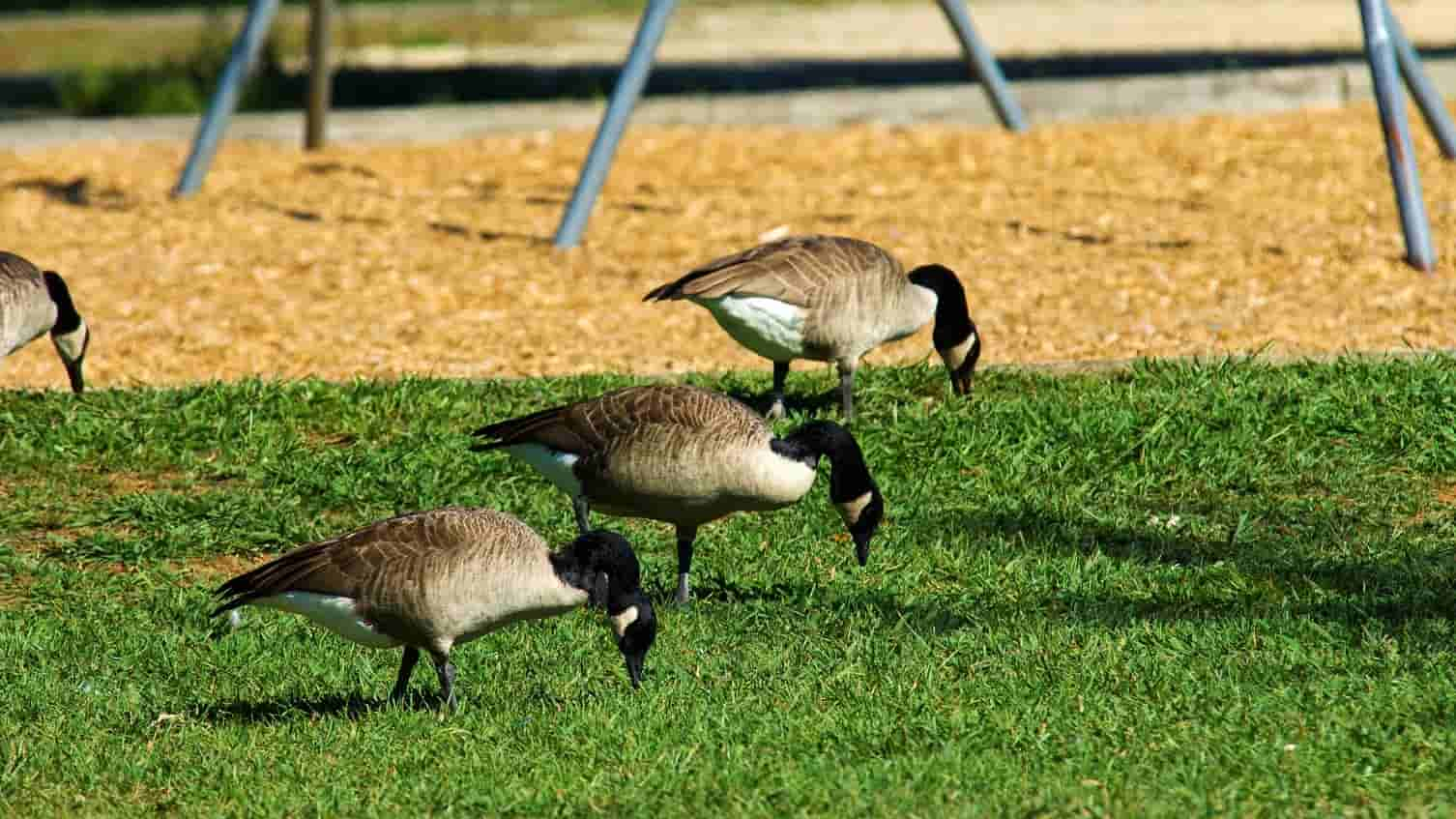Geese can be charming creatures to observe from a distance, but when they start taking over your pond, they can become a nuisance. Their droppings can pollute the water, and their presence can disrupt the ecosystem of your pond. If you’re facing a geese problem on your pond, there are several humane and effective ways to manage the situation without causing harm to the geese.

Credit: www.birdbgone.com
1. Install Bird Deterrents
One of the most common ways to deter geese from your pond is by installing bird deterrents. These can include visual deterrents like scarecrows, reflective tape, or predator decoys. Geese are easily spooked by these visual cues and will be less likely to linger around your pond.
2. Utilize Sound Devices
Geese are sensitive to sounds, so using sound devices can be an effective way to drive them away from your pond. You can use devices that emit sounds of predators or distress calls of geese to make them feel unsafe and leave the area.
3. Create Physical Barriers
Another way to prevent geese from accessing your pond is by creating physical barriers. This can include installing fences or netting around the pond to block the geese from entering. Make sure the barriers are sturdy and tall enough to deter the geese effectively.

Credit: www.yardfocus.com
4. Use Natural Repellents
There are natural repellents available that can help keep geese away from your pond. These can include substances like grape seed extract or garlic oil, which emit odors that geese find unpleasant. Spraying these repellents around the pond can discourage geese from staying in the area.
5. Modify the Pond Environment
Geese are attracted to ponds with easy access to food sources like grass and aquatic plants. By modifying the environment around your pond, you can make it less appealing to geese. You can mow the grass around the pond regularly and trim any overhanging vegetation to make it less inviting for geese to forage.
6. Implement Habitat Modification
Geese prefer ponds with open sightlines that allow them to spot potential predators easily. By planting tall vegetation or creating barriers that obstruct their view, you can make your pond less attractive to geese. This habitat modification can help discourage geese from frequenting your pond.
7. Encourage Natural Predators
Natural predators like foxes, coyotes, or dogs can help keep geese away from your pond. By encouraging these predators to visit your property, you can create a natural deterrent for geese. However, make sure to do this in a safe and humane manner that does not harm the predators or other wildlife in the area.
8. Implement Hazing Techniques
Hazing techniques involve using non-injurious methods to discourage geese from staying on your pond. This can include using lasers, water hoses, or other harmless means to startle the geese and make them feel unwelcome. Consistent hazing can help condition the geese to avoid your pond.
9. Seek Professional Assistance
If you’re facing a severe geese problem on your pond and none of the DIY methods seem to work, it may be time to seek professional assistance. Wildlife management experts can assess the situation and provide specialized solutions to help you get rid of geese in a safe and effective manner.
Conclusion
Dealing with geese on your pond can be challenging, but by implementing the right strategies, you can effectively manage the situation without causing harm to the geese or the environment. Whether you opt for bird deterrents, sound devices, natural repellents, or habitat modifications, there are plenty of humane ways to keep geese away from your pond. Remember to choose methods that are safe, environmentally friendly, and compliant with local regulations to ensure a harmonious coexistence with wildlife.

